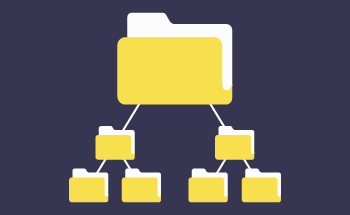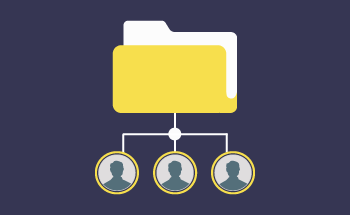Web 2.0 and Web 3.0: why everyone talks about them and what the differences are
13:49, 15.02.2023
The Internet needs a revolution. You may have noticed that the current model of the Internet is compromised: there is no anonymity or freedom of posting anymore. In some places, state controls to restrict access to certain sites or entire domains are in full swing, and in other places, restrictions are due to censorship that is imposed locally due to laws and regulations.
The average user is gradually turning from a subject into an object. This is why there is a growing perception that Web 2.0 is obsolete and that mankind needs Web 3.0. In this article, we will examine what is the first and second, and why the transition to a third version of the Internet is inevitable.
The birth of Web 1.0 technology
Objectively speaking, at the dawn of the Internet the concept of Web 1.0 did not exist – this retronym appeared in the 2000s when the development of Internet technologies made the transition to Web 2.0 possible. And this transition was not instantaneous, but gradual, so this classification is rather arbitrary.
Nevertheless, it is possible to identify a number of distinctive features that characterize the state and characteristics of the Internet in the period from 1991 to 2004:
- Servers did not retrieve content from databases, as they do now, but from file systems directly. For this reason, each time a new item appeared on the site, all pages had to be edited manually.
- Low prevalence of hypertext markup. Most of the content on the Web was represented by text.
- The pages were static and could only be edited by the site owner. A semblance of interactivity was formed with the help of guest books, chat rooms, and forums.
- In the design of site pages CSS styles are practically not used, because of which visually sites felt rather poor. And the use of CSS in those years was very problematic due to the low speed of the Internet connection and the limited power of the computers themselves.
- The most common dynamic content on sites in those days were GIF animations, and even they were not that common.
In essence, the sites could only be read. No automation, negligible interactivity, no ability to influence the content in any way on the part of users, and a very primitive design. That's all there is to say about Web 1.0 – it was the era of splash pages with primitive functionality and unkempt design.
Development of Web 2.0
That all changed in 2005 when the American Tim O'Reilly published the landmark article "What Is Web 2.0", in which he outlined the fundamental principles of the Next Generation Networks. The history of Web 2.0 began in 2004 and continues to this day.
With the move to Web 2.0, information decentralization has taken place – an entire community can develop one site. If the rules of the site and its engine allow, people can create entire pages, write huge long-reads, upload videos, etc. Social networks, wikis, and video hosting sites that developed with the transition to Web 2.0 are prime examples of this.
Let's highlight the key features of the Web 2.0 era:
- Ubiquitous authorization. Almost every site offers the possibility of creating an account to get certain preferences. On the one hand, it is convenient, because from a nameless anonymous person you turn into a very specific person with your name and reputation. On the other hand, this approach has led to the fact that large corporations and governments themselves can freely collect data about users. Their location, gender, age, interests, hobbies – everything.
- Dynamic sites. Now sites consist of dynamic pages – templates, a variety of content, scripts, and more. All this is stored on the servers as separate resources, and when you receive a request from the user is automatically formed as a page. The generation of content can take place on the server side or on the client side.
- Socialization and personalization. In the same social networks, users have been given the opportunity to personalize their pages. Change the background, add a video, and attach some text. Remember how quickly VKontakte became popular in 2006? Just three years after its creation, the number of users reached a crazy, at the time, 13 million people. The situation was similar abroad with the social networks LinkedIn, MySpace, and Facebook.
- The Internet has become faster, allowing sites to be filled with a variety of voluminous content, from simple animations and high-resolution images to hours of video clips.
- Ubiquitous adaptability – nowadays almost all websites are made so that they display correctly on any device, from personal computers and laptops to smartphones and tablets. In the era of Web 1.0, this was something you could only dream about.
With the move to Web 2.0, people have become not just observers, but full-fledged co-participants in the development of the Web. Users can participate in the creation of content, and sites in general have become much more informative and presentable.
A side effect is that the trendsetters and initiators of all large-scale changes are the corporations that own the largest platforms. Twitter, YouTube, Twitch, Facebook – all of these and many other platforms have gained enormous popularity thanks to ordinary Internet users. And they all ended up initiating certain changes in terms of freedom of information dissemination and censorship.
In essence, users have been "sold" to advertisers, and the development of Web 2.0 has brought us into an era of targeted advertising and a lack of privacy. Users have lost control over their own data, and large corporations can censor absolutely any content they deem unacceptable for political, religious, or any other reasons.
Evolution of the Internet thanks to Web 3.0 technology
Web 3.0 is a concept whose realization will lead to the complete decentralization of the Internet. It is what will solve all the problems that have accumulated over the years and remove any restrictions and barriers set by corporations born and bred by the multi-billion dollar Internet community.
The concept of Web 3.0 was described by the head of the American company Netscape Jason Calacanis. His understanding is based on the fact that in the future a meta-language describing the content of sites to organize the automatic exchange of data between a branched network of servers will be introduced.
This approach should solve the problem of the devaluation of resources and services caused by the proliferation of a large number of similar, unnecessary, and non-unique sites and services. The Internet has become monotonous and controlled. As Kalakanis and O'Reilly see it, moving to Web 3.0 will take the Internet to the next level.
What opportunities Web 3.0 offers
The first is a new round of decentralization. It is assumed that all data will be distributed among users. Right now, about 90% of all information is stored on single servers. Calculations will "migrate" from servers to smartphones, personal computers, and laptops of ordinary users – or other smart gadgets that will appear in the future.
Secondly, we are talking about the deeper integration of artificial intelligence and machine learning technologies. This is already happening right now – intelligent algorithms are searching for content, and they are also shaping a more personalized experience of being on the Web.
Third, the vast majority of software will be open source. This is necessary so that users clearly understand what tools and functions are embedded in this or that software, what data the program collects, and how it interacts with them. In practice, this will significantly improve security and privacy.
The fourth is the abolition of censorship in any form. Centralized content moderation will be a thing of the past, and users will be able to post any content they want. Moderation will fall on the shoulders of the community, which will be able to determine the acceptability of this or that content by voting. The influence of corporations will be negligible.
Fifth, the Internet will become ubiquitous, literally. We can already see the rudiments of this now when even the simplest gadgets get the ability to connect to the Internet. Smartwatches, teapots, smart home systems, and even refrigerators. As we move into Web 3.0, this trend will only get stronger.
In addition, as theorists suggest, in the future the way of authorization may change radically. Instead of endlessly creating new accounts for different services, people will be able to authorize through a so-called single layer, which will essentially be the key to all resources on the Internet. We are already seeing something similar now, with the vast majority of sites allowing authorization through a Google account.
Advantages and disadvantages of Web 3.0
The key advantage of Web 3.0 is total decentralization and the elimination of censorship. All participants of the World Wide Web become equal, and it will be ensured not by any single person or corporation, but by the technology itself. The principle of building new networks will not allow anyone to interfere or radically influence in any way the fundamental concepts predetermined in the new paradigm.
If everything is clear with the advantages, it is difficult to find any disadvantages in this concept before its actual implementation. Let us note the two most obvious ones:
- Decentralization entails legal and regulatory risks. Exponential growth in cybercrime, hate speech, the spread of disinformation, and a post-truth world are side effects that we may face with the transition to Web 3.0 if it is implemented in the way we described above. Freedom without borders is as poison to society as total censorship.
- Difficulties with regulating and enforcing local laws. A simple question: what country's laws would apply to a particular website with content from many countries around the world? How to answer it and who should do it is still unclear.
There may be many more of these shortcomings in practice, so don't idealize Web 3.0. In the near future we will have to face new challenges and questions that the coming era brings. This concludes our article and thanks for your attention to all who read it to the end.


